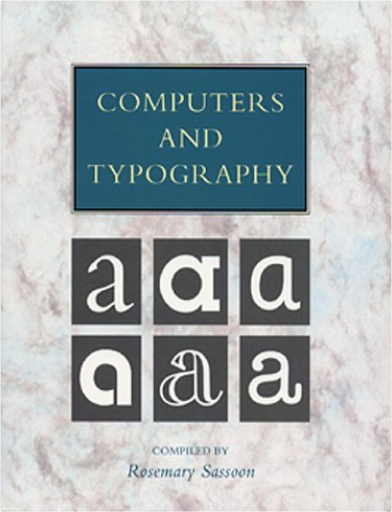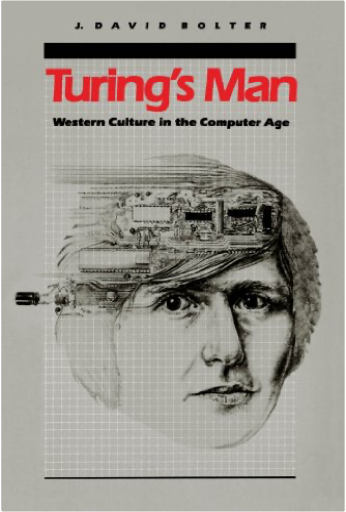 Turing's Man: Western Culture in the Computer AgeJ. David Bolter Turing's Man: Western Culture in the Computer AgeJ. David Bolter Trained in both classics and computer science, Bolter considers the cultural impact of computers on our age, comparing the computer to earlier technologies that redefined fundamental notions of time, space, language, memory, and human creativity. Surprisingly, he finds that in many ways the outlook of the computer age bears more resemblance to that of the ancient world than to that of the Enlightenment. The classical philosopher and the computer programmer share share a suspicion of infinity, an acceptance of necessary limitations on human achievement, and a belief that results are more important than motives. 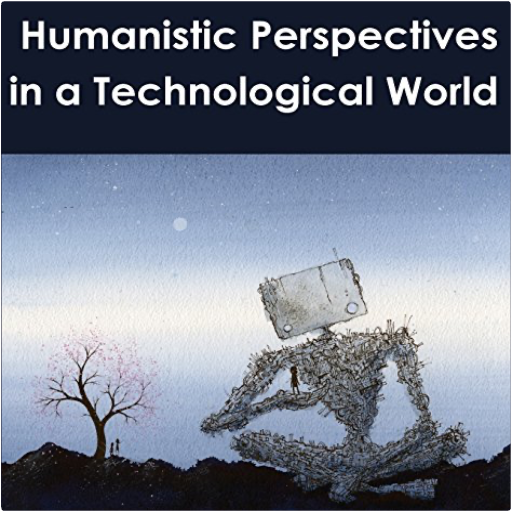 Humanistic Perspectives in a Technological WorldRichard Utz Humanistic Perspectives in a Technological WorldRichard Utz This volume, a veritable narrative tour through the School of Literature, Media, and Communication (LMC) at The Georgia Institute of Technology, is first and foremost a communal effort by all the faculty who decided to contribute essays on how they provide humanistic perspectives in a technological world in their research, teaching, and service activities. 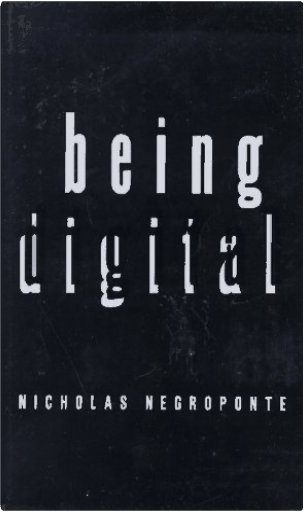 Being DigitalNicholas Negroponte Being DigitalNicholas Negroponte In lively, mordantly witty prose, Negroponte decodes the mysteries—and debunks the hype—surrounding bandwidth, multimedia, virtual reality, and the Internet, and explains why such touted innovations as the fax and the CD-ROM are likely to go the way of the BetaMax. "Succinct and readable. . . . If you suffer from digital anxiety . . . here is a book that lays it all out for you."—Newsday. 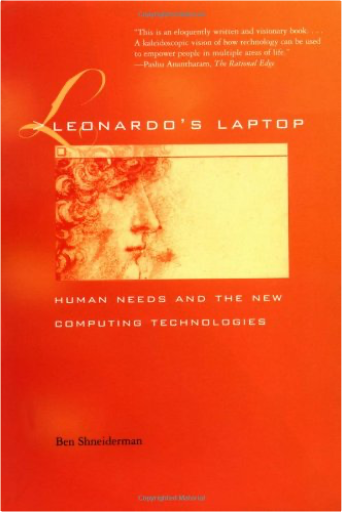 Leonardo's Laptop: Human Needs and the New Computing TechnologiesBen Shneiderman Leonardo's Laptop: Human Needs and the New Computing TechnologiesBen Shneiderman Ben Shneiderman's book dramatically raises computer users' expectations of what they should get from technology. He opens their eyes to new possibilities and invites them to think freshly about future technology. He challenges developers to build products that better support human needs and that are usable at any bandwidth. Shneiderman proposes Leonardo da Vinci as an inspirational muse for the "new computing." He wonders how Leonardo would use a laptop and what applications he would create. 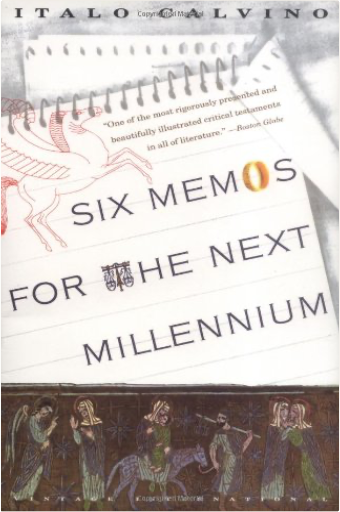 Six Memos for the Next MillenniumItalo Calvino Six Memos for the Next MillenniumItalo Calvino Six Memos for the Millennium is a collection of five lectures Italo Calvino was about to deliver at the time of his death. Here is his legacy to us: the universal values he pinpoints become the watchwords for our appreciation of Calvino himself. 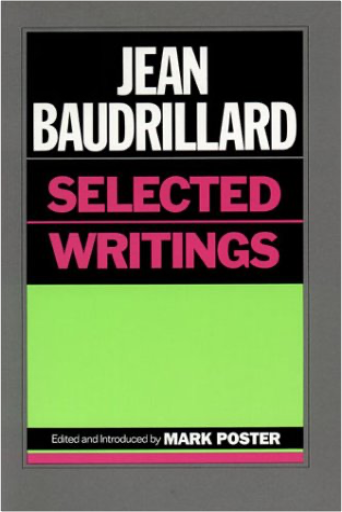 Jean Baudrillard: Selected WritingsJean Baudrillard, Mark Poster Jean Baudrillard: Selected WritingsJean Baudrillard, Mark Poster This is an expanded edition of the first comprehensive overview of the work of Jean Baudrillard, one of the most fascinating thinkers on the French intellectual scene. To the original selection of his writings from 1968 to 1985, this new edition adds examples of Baudrillardâs work since that time. 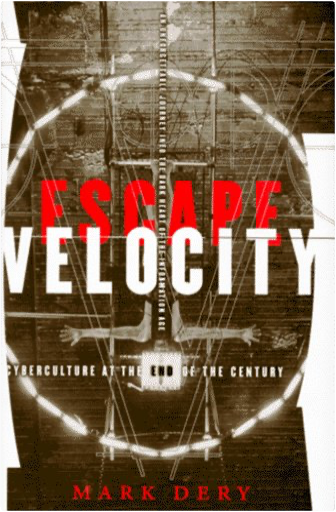 Escape Velocity: Cyberculture at the End of the CenturyMark Dery Escape Velocity: Cyberculture at the End of the CenturyMark Dery In the first in-depth exploration of fringe computer culture, Dery introduces readers to underground roboticists, cybersex enthusiasts, virtual-reality designers, cyberpunk novelists, and would-be cyborgs. In exploring this strange new world, Drey shifts the focus from the corporations that design the digital machines that are changing our reality to the fringes of cyberculture, where real-life cyberpunks are pursuing the bright promise of these technologies. 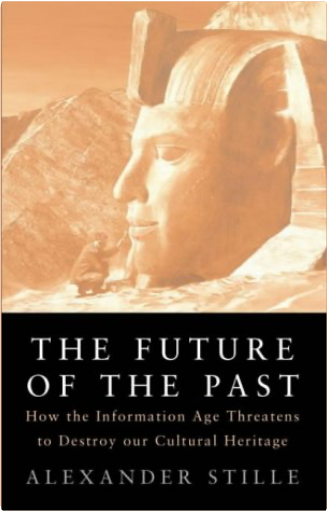 The Future of the PastAlexander Stille The Future of the PastAlexander Stille A fascinating tour of the past as it exists today, and of the dangers that threaten it, through incisive portraits of our attempts to maintain it: the high-tech struggles to save the Great Sphinx and the Ganges; the efforts to preserve Latin within the Vatican; the digital glut inside the National Archives, which may have caused more information to be lost than ever before; and an oral culture threatened by a "new" technology: writing itself. Stille explores not simply the past, but our ideas about the past―and how they will have to change if our past is to have a future. 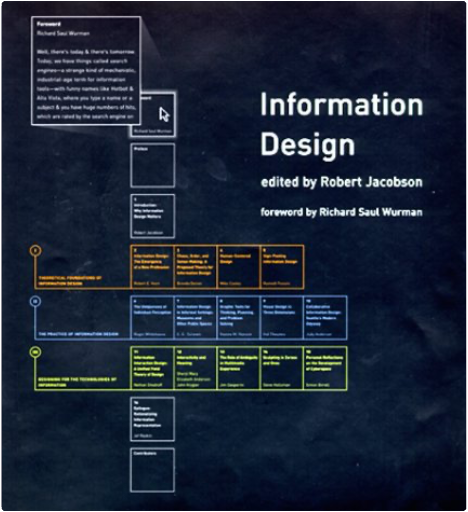 Information DesignRobert Jacobson Information DesignRobert Jacobson foreword by Richard Saul Wurman 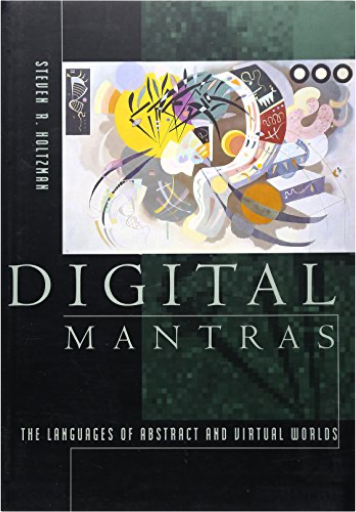 Digital Mantras: The Language of Abstract and Virtual WorldsSteven R. Holtzman Digital Mantras: The Language of Abstract and Virtual WorldsSteven R. Holtzman Computer technology is making possible new worlds of expression that are already being explored by a growing subculture of artists, musicians, virtual reality enthusiasts, and cyberpunks. In Digital Mantras, Steven Holtzman synthesizes ideas from a number of different disciplines to arrive at a new philosophy of creativity for the digital age.Blending ideas from music, computing, art, and philosophy, with biographical and historical anecdotes and a thread of mysticism, Holtzman gives us new ways to think about the integration of computers into the creative process. He shows how computers will change the way we create, and reveals the exciting potential for entirely new forms of expression. Running throughout the book are episodes from Holtzman's own sometimes mystical journey in search of the personal aesthetic he presents.Holtzman explores the presence and use of structure in fields as diverse as the development of ancient human languages, the philosophy of the Buddhist monk Nagarjuna and the linguist Ferdinand de Saussure, the music of Arnold Schoenberg and Anton Webern, the paintings of Wassily Kandinsky, and the pioneering grammars of Panini and Noam Chomsky. He then turns to the use of computers for building abstract and virtual worlds in language, music, and art as well as virtual reality, and surveys the work of AI pioneer Terry Winograd, composers Gottfried Michael Koenig and Iannis Xenakis, and artist Harold Cohen. Holtzman concludes by discussing the aesthetic implications of these new worlds. He introduces the concept of digital expression, along with examples that hint at its far-reaching possibilities. 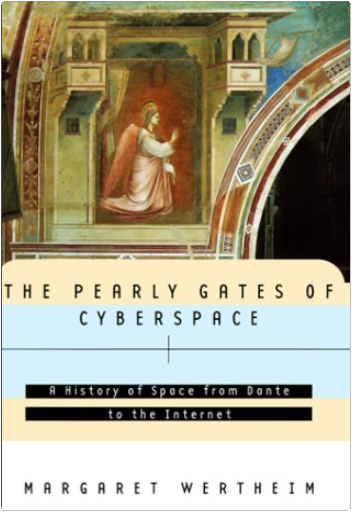 The Pearly Gates of Cyberspace: A History of Space from Dante to the InternetMargaret Wertheim The Pearly Gates of Cyberspace: A History of Space from Dante to the InternetMargaret Wertheim In this day and age, cyberspace may seem an unlikely gateway for the soul. But, as science commentator Margaret Wertheim argues in this volume, cyberspace has become more and more a repository for immense spiritual yearning. Wertheim explores the underpinnings of this mapping of spiritual desire onto digitized space and suggests that the modem today has become a metaphysical escape-hatch from a materialism that many people find increasingly unsatisfying. In a journey through the history of space, Wertheim traces the combined story of physical space and spiritual space from the Middle Ages to the present, and shows how reality has come to be defined as the exclusive domain of the physical world. It is against this profoundly materialistic world that Wertheim persuades us of the appeal and ultimate failure of cyberspace to satisfy spiritual needs. |
 Made with Delicious Library
Made with Delicious LibraryDenver, CO zipflap congrotus delicious library Tolva, John

